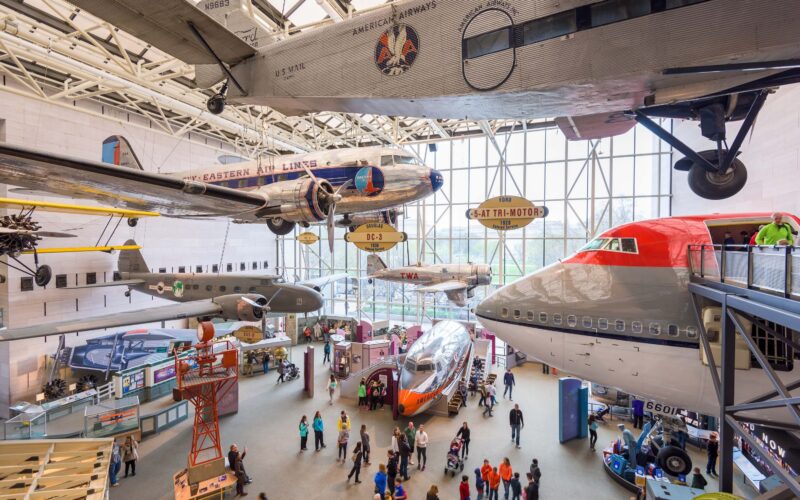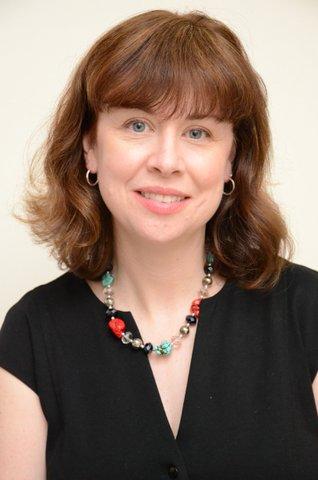Every day is Space Day for Margaret Weitekamp, chair and curator of the space history department at the National Air and Space Museum. AeroTime CEO, Richard Stephenson, caught up with Margaret to mark International Space Day.
The interview took place shortly after the death of Apollo 11 astronaut Michael Collins at the age of 90. Collins was instrumental in a critical point in the development of the National Air Space Museum, when he joined as director after the Apollo 11 mission to the moon, Margaret says.
“The museum existed as a collection and a staff and had displays on the National Mall in a building called the Arts and Industries Building. But it didn’t have its own dedicated space,” she explains. “He really came in and led the campaign and got the museum not only funded, but also built and opened by the United States’ birthday on July 4, 1976. The idea was a museum on the Mall by the Bicentennial, and he really delivered.”
Margaret acknowledges that since the 1960s and that incredible Apollo 11 mission that saw men walk on the moon, the pace of change hasn’t been as fast as some might have hoped for.
“But I think that we’ve seen a development of a broad infrastructure – the International Space Station is a wonderful collaboration,” she says, adding that people are thinking about going back to the moon.
Dr. Margaret Weitekamp, Image by the National Air and Space Museum of the Smithsonian Institution
“And we’re watching rovers on Mars not only rove around and essentially act as surrogate geologists. The Ingenuity helicopter on Mars is the first flying thing that we’ve sent to another planet,” she highlights.
“So I think we might not have had the pace of change by the year 2000 that I think folks might have hoped for in the 1960s. But I think we’re seeing a vibrant, and deep, rich field of study, both in terms of science and practical applications in spaceflight.”
The aim of the National Air and Space Museum is to tell the story of U.S. aviation and space flight, bringing the stories to people by allowing them to engage with real-life objects.
Margaret curates more than 5,000 artefacts at the museum on Washington DC’s Mall and is constantly seeking out new ways to bring space history to life, whether in terms of how space flight occurred or was originally imagined.
Asked for her favourite objects, Margaret picks two from very different ends of the spectrum.
“I would say probably the object that has been most challenging and in many ways, very rewarding is the 11-foot studio model of the Star Trek Starship Enterprise. We did a massive restoration conservation project on that artifact some five years ago. So that I think was very rewarding for me both as a curator and as a fan. And I think those things overlap very much. So that’s my favorite big object.”
On the smaller end of the scale, Margaret describes a charm bracelet put together by Toni Foster, whose husband, Bob Foster, was an aerospace engineer supporting space efforts in the 1960s. For Margaret, the bracelet symbolizes the whole community around the space industry in Florida in the 1960s.
“I’m excited that that’s going on display in the new destination moon exhibit that’s going to be opening in a couple of years. So from big things to small things, what we’re really looking for are rich objects that tell multiple stories.”
Another of the museum’s famous exhibits is a touchable moon rock. All pieces of moon rock are owned by NASA because they are research pieces but Margaret says NASA recognized the value of allowing people to connect with it as an exhibit.
“We would love to have a touchable Mars rock next to our touchable moon rock, I think people would enjoy that very much,” she says.
Outside of her own collection, Margaret cites the original Wright Flyer from 1903 and John Glenn’s Friendship 7 capsule, in which he became the first American to orbit the Earth in February of 1962.
“I think those real things, the real craft, give people some appreciation and some imagination about what it must have been like to be flying in those things.”
Sadly, there are some objects that Margaret would love to have in the collection but which may never be found. One is a Cabbage Patch doll, chubby little dolls that were popular in the 1980s.
“There was one of those that was in a young astronaut outfit and that was flown on a space shuttle. And I always thought ‘Wouldn’t that be a wonderful thing to have on display?’ This has been to space, and that’s a very rare and wonderful thing to get things back from space.”
Margaret said a search has revealed that the toy in question was brought back to Earth and taken to the Reagan White House, where the staff put it in a holiday toy drive.
“And it went to a needy child for Christmas that year, who got not only a space shuttle Cabbage Patch Kid, but one that had been to space!” Margaret believes the toy will never be found again now. “The stories behind the things that we can’t get are sometimes just as interesting as some of what we have,” she says philosophically.
Stephenson suggested that we should launch a campaign to find the item, “I think anyone watching who might know of the existence of an Astronaut Cabbage Patch Kid, should get in touch with you!”
The museum was already undergoing a refurbishment before the pandemic hit and many staff have been working on developing new exhibits and collections from home to bring a refreshed experience to visitors. In addition, the team was already looking at ways of reaching those who can’t make it to the museum in person and the Covid-19 pandemic has certainly sped up those efforts, from making curators and educational staff available for online lectures to putting the artifacts online to allow people to learn about them from home.
“ I think it’s going to be something that you’ll see as a lasting effect on the other side of this recent episode,” Margaret says.
Margaret is also the author of the book Right Stuff, Wrong Sex about America’s First Women in Space program.
She believes that progress has been made, but that the space industry is not yet a full equality.
“I think it’s a long slow climb to change,” she says, highlighting that it was only in the 1970s that professional schools and military institutions really opened up to women.
“I think those are the things that allow the next generation to really be doing these great things in aerospace. It’s certainly something that we are excited about promoting at the National Air and Space Museum. We’re delighted to think that someday the first woman on Mars is walking through our exhibits somewhere getting a touch of inspiration and going back to study very hard.”
This article was first published on April 12, 2021.


